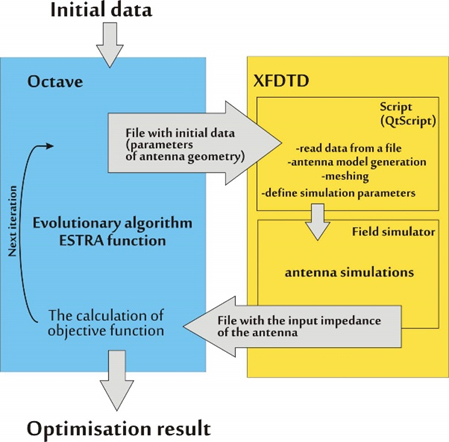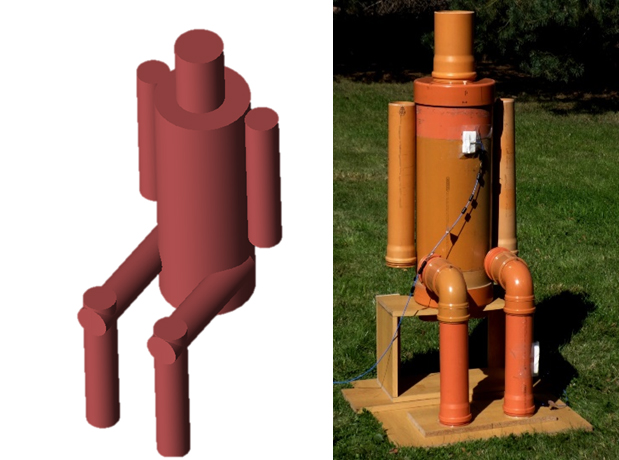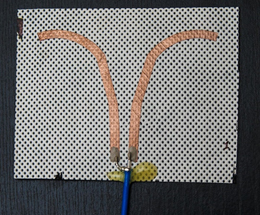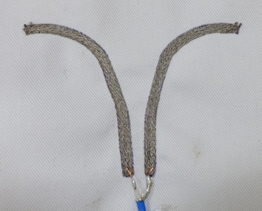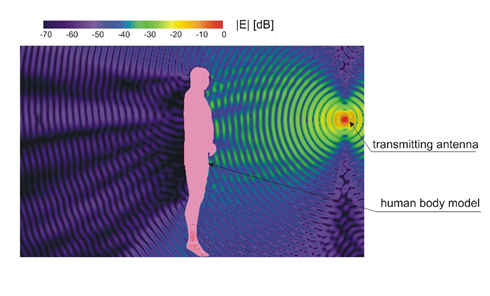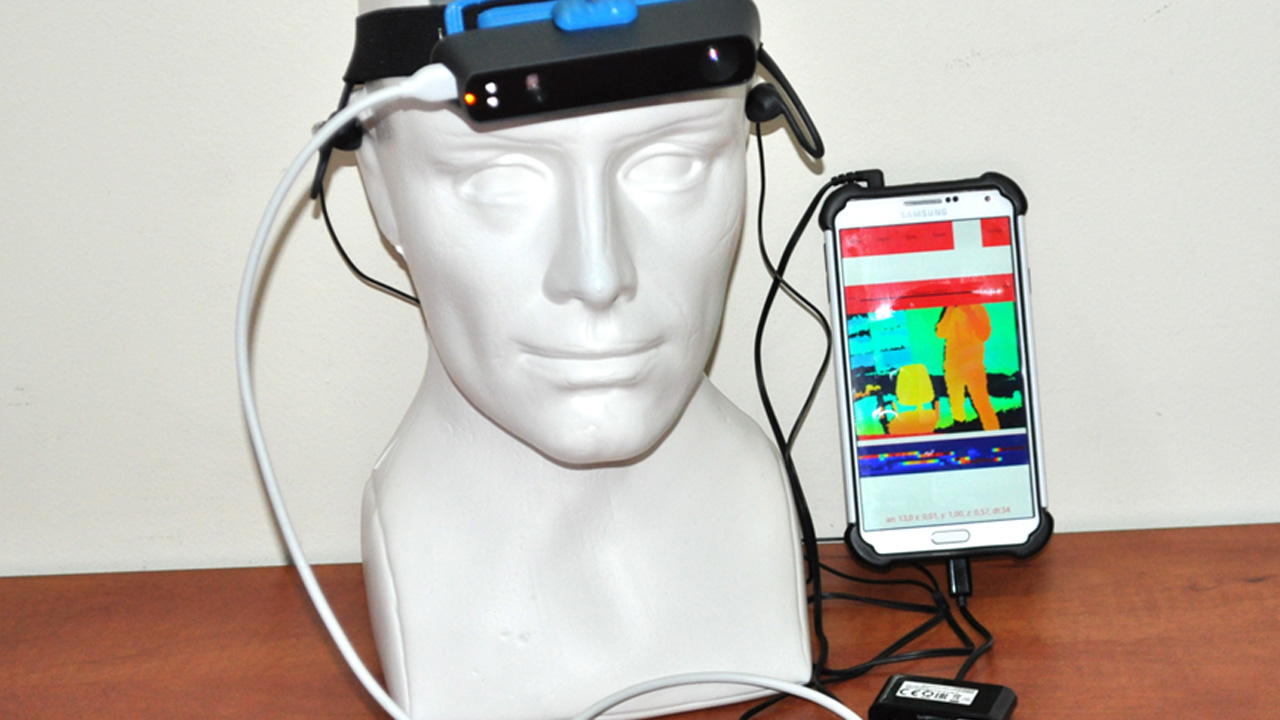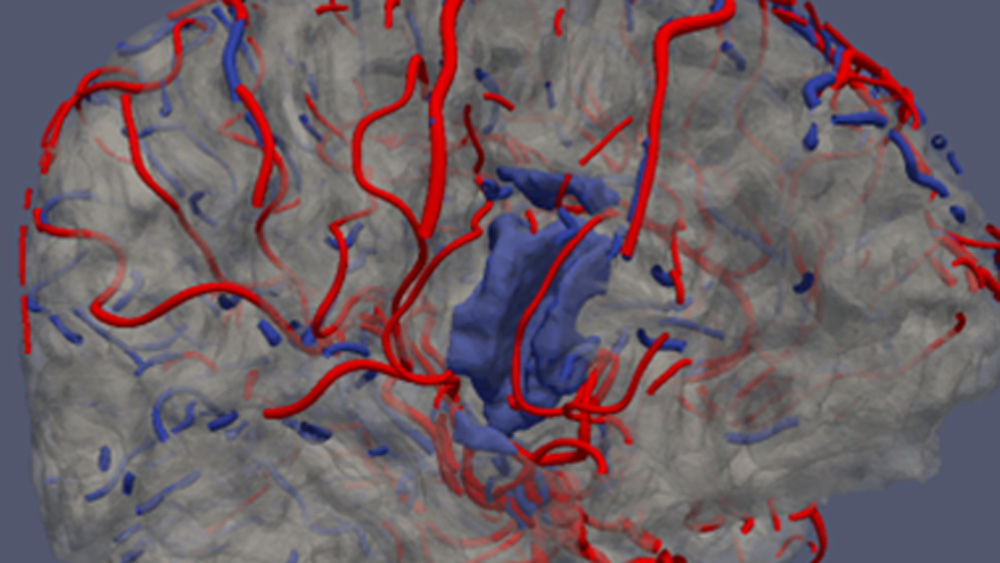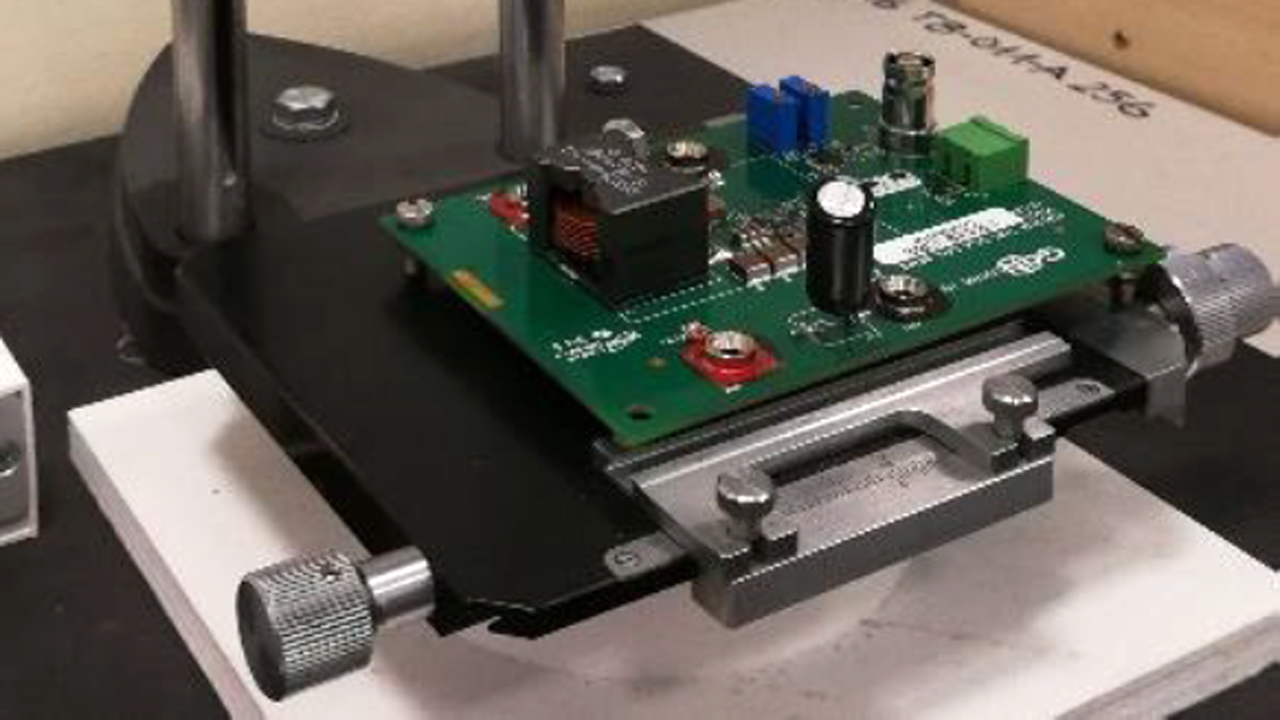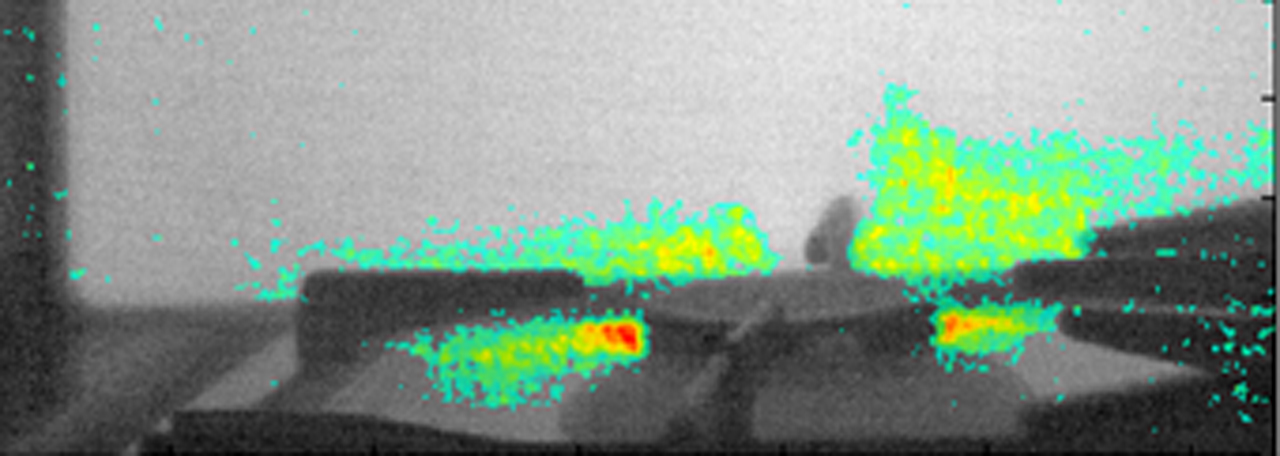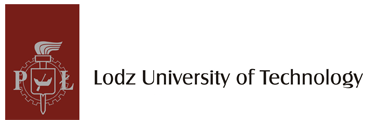Design of antennas and Wireless Body Area Networks
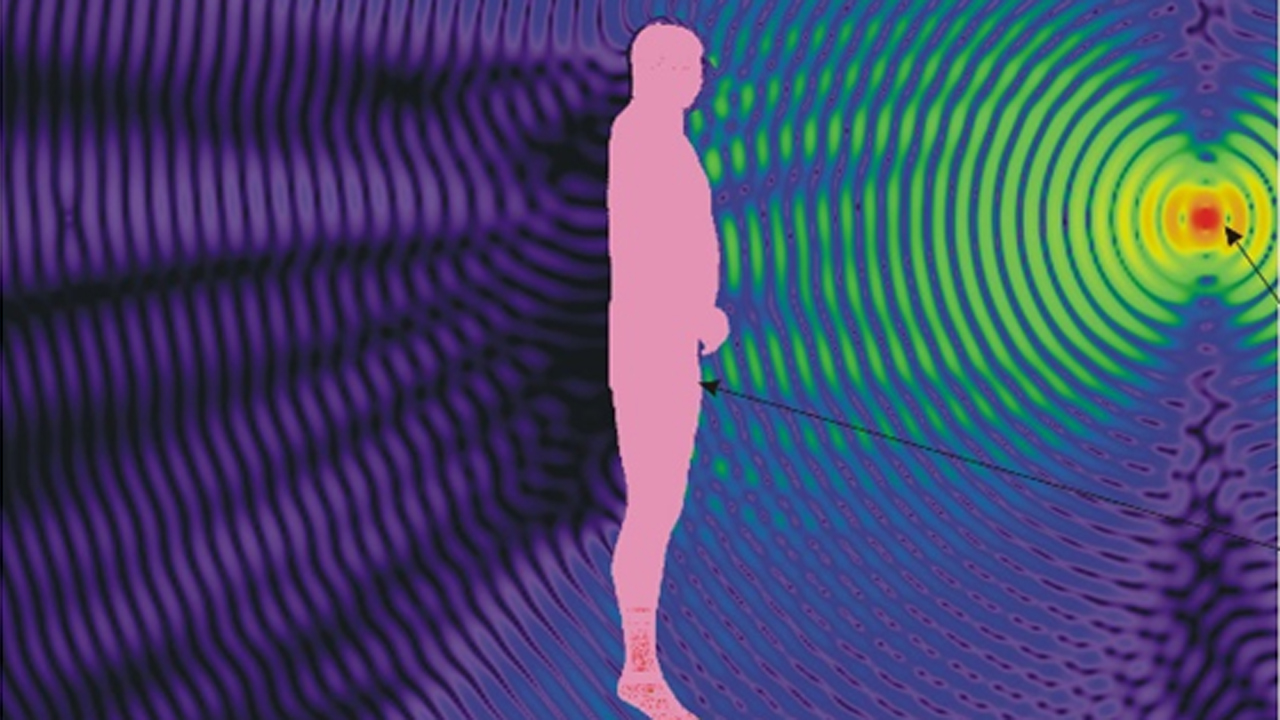
Motivation
The research in the field of antenna design, which is carried out at the Institute of Electronics, is related to the development of modern wireless communication systems. These include systems designed to work in the proximity of human body. They require the development of new antenna designs and the improvement of tools for their design. Another stimulus for the development of this research area is the development of material technologies enabling the production of antennas, such as the technology of conductive textile materials.
- Research directions
Application of automatic optimization algorithms to the antenna design
The research direction is realized by a team that includes: dr hab. inż. Łukasz Januszkiewicz, prof. Paolo Di Barba, dr hab. inż. Sławomir Hausman. The scientific problem that was undertaken by the research team focuses on developing a methodology of automatic antenna optimization using a program for electromagnetic simulation that utilizes finite difference time domain method and automatic optimization algorithms. In addition, research focuses on the selection and development of new optimization algorithms that enable the reduction of computation burden.
Automatic optimization algorithm using simulations in XFdtd program
Development of body models for the design of wearable antennas
The research direction is carried out by: dr hab. inż. Łukasz Januszkiewicz. Accurate numerical body models have no physical equivalents. To solve this problem, research is being carried out on the development of body models using simple solids (cylinder, cuboid) with a homogeneous structure to map the whole body or its fragment. Thanks to this, such models can be used in the processes of automatic optimization of wearable antennas by means of electromagnetic simulations. The physical models can be made using cheap and available materials. Models of this type are used to study the parameters of wearable antennas and to study the attenuation in the radio channel in body area networks.
Simplified body model in sitting position: a – numerical, b – physical
The use of textile technologies in antenna design.
The research direction is carried out by: dr hab. inż. Łukasz Januszkiewicz, dr hab. inż. Ewa Skrzetuska Thanks to the materials used, the textile antennas can be integrated with the user's clothing. Their design requires taking into account the proximity of the body as well as the technological requirements related to the use of flexible conductive and insulating materials. Such antennas can be made of woven fabrics, nonwovens or yarns and threads. This makes them very light and flexible. In the case of these antennas, scientific works concern both electromagnetic issues related to the design of the radiating structure as well as technological issues related to the selection of textiles with sufficiently high conductivity or the development of methods of joining textile materials and metal parts of wave guides.
Analysis of the environmental impact of antenna radiation in wireless communication systems.
The research direction is carried out by dr hab. Eng. Łukasz Januszkiewicz together with Dr. Marek Czerwiński from the University of Life Sciences in Poznań. The research problem undertaken is the study of the influence of electromagnetic waves on the vegetation of meadows. As part of the preliminary work, indicators of the impact of electromagnetic radiation on plant communities and areas for which such an impact may occur were identified. The result of the preliminary work was published in the journal Ecological Indicators (140 points).
[Marek Czerwiński, Łukasz Januszkiewicz, Alain Vian, Amparo Lázaro, "The influence of bioactive mobile telephony radiation at the level of a plant community – Possible mechanisms and indicators of the effects", Ecological Indicators, Volume 108, January 2020, 105683 (JCR, Impact Factor: 4.49)] < p>Electromagnetic field distribution in the proximity of human body
- Achievements
The most important research achievements are listed (in chronological order) in the publications in which the results of these works were described.
- Perspectives
Further research works concern the design of wireless systems operating in the proximity of human body with the use of 5G technology. New antenna structures are being developed for the Internet of Things. In addition, body models are being developed to optimize these systems.
Conducting these works is possible thanks to the competence and know-how in the team of the Institute of Electronics in the following areas:
- – numerical modeling of electromagnetic problems
- – design of antennas and their feed lines
- – computer optimization of microwave elements
- – microwave measuring technique.
- Contact persons
- Relevant publications nad patents
- 1. Method of measuring electrical parameters of textiles in the high frequency range
- • S. Hausman, Ł. Januszkiewicz, M. Michalak, T. Kacprzak, I. Krucińska, High Frequency Dielectric Permittivity of Nonwovens, Fibres and Textiles in Eastern Europe, Vol. 14, No. 5 (59), 2006, str. 60 – 63
- 2. Textile V antenna design
- • Ł. Januszkiewicz, S. Hausman, T. Kacprzak, Antena mikrofalowa dla systemów tekstronicznych, Przegląd Elektrotechniczny, 2009, Nr: 06/2009, str. 42-45
- 3. Antenna array for compensation of human body influence on path-loss in WBAN
- • Ł. Januszkiewicz, The analysis of textile antenna array radiation pattern, 18-th International Conference on Microwaves, Radar and Wireless Communications, Vilnius, 2010, str. 1-4
- 4. Textile respiratory rate sensor
- • Patent Application: Izabella Krucińska, Ewa Skrzetuska, Sławomir Hausman, Łukasz Januszkiewicz, nr P.408711 (data zgłoszenia: 30.06.2014r.) Tekstylny czujnik do monitorowania częstotliwości oddechu.
- 5.Texile antenna made with PVD technology
- • Ł. Januszkiewicz, S. Hausman, I. Nowak, I. Krucińska, Textile vee antena made with PVD process, International Journal of Applied Electromagnetics and Mechanics, 2014, Vol. 46, Issue - 2, str. 361 – 365
- • Iwona Nowak, Izabella Krucińska, Łukasz Januszkiewicz, Metallic Electroconductive Transmission Lines Obtained on Textile Substrates by Magnetron Sputtering, FIBRES & TEXTILES in Eastern Europe 2019; 27, 3(135): 51-57 (Impact Factor: 0,677)
- 6. The analysis of influence of textile antenna location on its performance
- • Ł. Januszkiewicz, The analysis of influence of textile antenna location on its performance, 2015 9th European Conference on Antennas and Propagation (EuCAP), Lisbon, 2015, str. 1-5
- 7. Simplified human body model for antenna design
- • Ł. Januszkiewicz, S. Hausman, Simplified human phantoms for narrowband and ultra-wideband body area network modelling, COMPEL - The international journal for computation and mathematics in electrical and electronic engineering, 2015, vol. 34:2, str. 439-447
- • Ł. Januszkiewicz, S. Hausman, Simplified human phantoms for wireless body area network modelling, 9th European Conference on Antennas and Propagation (EuCAP), Lisbon, 2015, str. 1-4,
- 8. Textile wireless indoor positioning system with inertial sensors and infrared beacons
- • Ł. Januszkiewicz, J. Kawecki, R. Kawecki and P. Oleksy, Wireless indoor positioning system with inertial sensors and infrared beacons, 2016 10th European Conference on Antennas and Propagation (EuCAP), Davos, 2016, pp. 1-3
- 9. Wideband textile antenna design
- • Ł. Januszkiewicz, P. Di Barba, S. Hausman, Optimization of wearable microwave antenna with simplified electromagnetic model of the human body, Open Physics, 2017, Vol.15(1): str. 1055-1060
- 10. Dual band textile antenna
<
- • Ł. Januszkiewicz, P. Di Barba, S. Hausman, Hierarchical paradigm for automated optimal design of dual-band wearable antenna with simplified human body models, COMPEL - The international journal for computation and mathematics in electrical and electronic engineering, 2018, Vol. 37 Issue: 5, str. 1597-1608,
- 11. The method of making electrical connections between textile elements and electric cables
- • Patent: Ł. Januszkiewicz, E. Skrzetuska, I. Krucińska, Patent PL 228966 B1, Sposób wykonania połączenia elektrycznego między ścieżkami elektroprzewodzącymi wykonanymi na podłożu tekstylnym i przewodami elektrycznymi, udzielenie: 30.05.2018 WUP 05/18
- 12. Triple band antenna design
- • Ł. Januszkiewicz, Trójpasmowa antena nasobna przeznaczona do pracy w pasmach 5g oraz ISM, Przegląd Telekomunikacyjny – Wiadomości Telekomunikacyjne, 2019, rocznik , nr 6, str. 233-236,
- 13. Textile system for indoor people localization
- • J. Kawecki, P. Oleksy, L. Januszkiewicz, Inertial Sensors Integrated with Clothing to Localize People Inside Buildings, Int. Journal Of Electronics And Telecommunications, 2020, Vol. 66, NO. 1, str. 53-58
- • J. Kawecki, P. Oleksy, Ł. Januszkiewicz, S. Hausman, System lokalizacji ludzi wewnątrz budynków wykorzystujący czujniki inercyjne zintegrowane z odzieżą, Przegląd Telekomunikacyjny – Wiadomości Telekomunikacyjne, 2019, rocznik , nr 6, str. 245-248,
- 14. Textile antenna array ptimization
- • Ł. Januszkiewicz, P. Di Barba, S. Hausman, Optimal Design of Switchable Wearable Antenna Array for Wireless Sensor Networks, Sensors, vol. 20, 2020, str. 2795
- • Ł. Januszkiewicz, P. D. Barba and S. Hausman, Optimal Synthesis of Wearable Antenna Array for Interference Reduction in 700MHz Band, 2019 19th International Symposium on Electromagnetic Fields in Mechatronics, Electrical and Electronic Engineering (ISEF), Nancy, France, 2019, pp. 1-2, Patents:
- • Łukasz Januszkiewicz, Sławomir Hausman, Tomasz Kacprzak, Jadwiga Bilska, Marina Michalak, Izabella Krucińska, Pat.216923, Antena tekstylna, udzielenie: 30.05.2014, WUP 05/14
- • Łukasz Januszkiewicz, Ewa Skrzetuska, Izabella Krucińska, Pat.228966, Sposób wykonania połączenia elektrycznego między ścieżkami elektroprzewodzącymi wykonanymi na podłożu tekstylnym i przewodami elektrycznymi, udzielenie: 30.05.2018, WUP 05/18
- • Izabella Krucińska, Ewa Skrzetuska, Sławomir Hausman, Łukasz Januszkiewicz, Pat.235486 , Tekstylny czujnik do monitorowania częstotliwości oddechu, udzielenie: 24.04.2020, WUP 12/2020
Patents
- Łukasz Januszkiewicz, Sławomir Hausman, Tomasz Kacprzak, Jadwiga Bilska, Marina Michalak, Izabella Krucińska, Pat.216923, Antena tekstylna, udzielenie: 30.05.2014, WUP 05/14
- Łukasz Januszkiewicz, Ewa Skrzetuska, Izabella Krucińska, Pat.228966, Sposób wykonania połączenia elektrycznego między ścieżkami elektroprzewodzącymi wykonanymi na podłożu tekstylnym i przewodami elektrycznymi, udzielenie: 30.05.2018, WUP 05/18
- Izabella Krucińska, Ewa Skrzetuska, Sławomir Hausman, Łukasz Januszkiewicz, Pat.235486 , Tekstylny czujnik do monitorowania częstotliwości oddechu, udzielenie: 24.04.2020, WUP 12/2020
- 1. Method of measuring electrical parameters of textiles in the high frequency range

